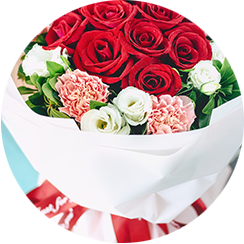Hydrangea - The Changing Blossom
Posted on 04/11/2024
Hydrangeas are a beloved staple in many gardens worldwide, renowned for their large, showy blooms and the unique ability to change color. Their adaptability and aesthetic appeal make them a favorite among both novice and experienced gardeners. In this in-depth guide, we'll explore everything you need to know about hydrangeas, from their fascinating attributes and ideal care practices to their pros and cons. Additionally, we'll provide you with essential tips to help you grow and maintain these captivating plants.
Understanding Hydrangeas
Originating from Asia and the Americas, hydrangeas belong to the genus Hydrangea within the family Hydrangeaceae. With over 70 species, these flowering plants vary widely in size, shape, and color. Common varieties include Hydrangea macrophylla (also known as bigleaf or mophead hydrangea), Hydrangea paniculata (panicle hydrangea), and Hydrangea quercifolia (oakleaf hydrangea).

The Science Behind Changing Colors
One of the most intriguing aspects of hydrangeas is their ability to alter bloom color based on soil pH levels. In general, acidic soils (pH levels below 6.0) produce blue flowers, neutral soils (pH around 7.0) yield pale cream-colored blooms, and alkaline soils (pH levels above 7.0) result in pink or red flowers. This phenomenon is primarily observed in Hydrangea macrophylla varieties.
The color change occurs due to the presence of aluminum ions in the soil. In acidic soils, aluminum becomes more readily available and is absorbed by the plant, resulting in blue pigments. In alkaline soils, aluminum availability is limited, leading to pink or red pigments. Gardeners can manipulate bloom color by adjusting soil pH using amendments like sulfur or lime.
Care and Maintenance
Proper care and maintenance are crucial for hydrangeas to thrive and exhibit their stunning blooms. Here are some essential tips:
- Soil: Hydrangeas prefer well-draining, fertile soil. Amend the soil with organic matter like compost to improve its texture and fertility.
- Watering: Hydrangeas require consistent moisture. Water them deeply at least once a week, more frequently during hot or dry periods.
- Light: Most hydrangeas thrive in partial shade. However, some species, like Hydrangea paniculata, can tolerate full sun if provided with adequate moisture.
- Fertilization: Apply a balanced, slow-release fertilizer in spring and mid-summer to promote healthy growth and vibrant blooms.
- Pruning: Prune hydrangeas to remove dead or damaged wood and to shape the plant. Timing and technique vary by species, so be sure to research your specific variety.
Pros and Cons
Pros
- Aesthetic Appeal: Hydrangeas offer striking, large blooms that can enhance any garden or landscape.
- Versatility: Suitable for various garden settings, including borders, containers, and hedges.
- Color Variety: Unique ability to change color based on soil pH, allowing for customizable garden aesthetics.
- Longevity: With proper care, hydrangeas can thrive for many years, providing continuous beauty.
Cons
- Water Requirements: High moisture needs can be challenging in drought-prone areas.
- Soil Sensitivity: Hydrangeas are sensitive to soil conditions and may require adjustments to obtain desired bloom colors.
- Pest and Disease Susceptibility: Can be prone to issues like powdery mildew, aphids, and root rot if not properly maintained.
Tips for Growing Hydrangeas
- Select the Right Variety: Choose a hydrangea species suited to your climate and garden conditions.
- Test Soil pH: Conduct a soil test to determine pH levels and decide if amendments are needed to achieve desired bloom colors.
- Monitor Moisture Levels: Ensure your hydrangeas receive consistent moisture without becoming waterlogged. Mulching can help retain soil moisture.
- Protect from Harsh Sun: In hotter climates, provide afternoon shade to prevent leaf scorch and wilting.
- Watch for Pests and Diseases: Regularly inspect your plants for signs of pests or disease and take prompt action if issues arise.

Takeaways
Hydrangeas are a rewarding addition to any garden, offering unique and dynamic blooms that can adapt to their environment. Understanding their basic care needs and how to manipulate bloom colors allows gardeners to enjoy the full potential of these stunning plants.
Conclusion
Hydrangeas truly epitomize the beauty and mystery of the plant world. Their ability to transform bloom color based on soil conditions adds an element of enchantment to any garden. Despite some challenges, the numerous benefits they provide make them a worthwhile choice for gardeners of all skill levels. By following the care tips and recommendations highlighted in this guide, you can enjoy the captivating beauty of hydrangeas for years to come.







